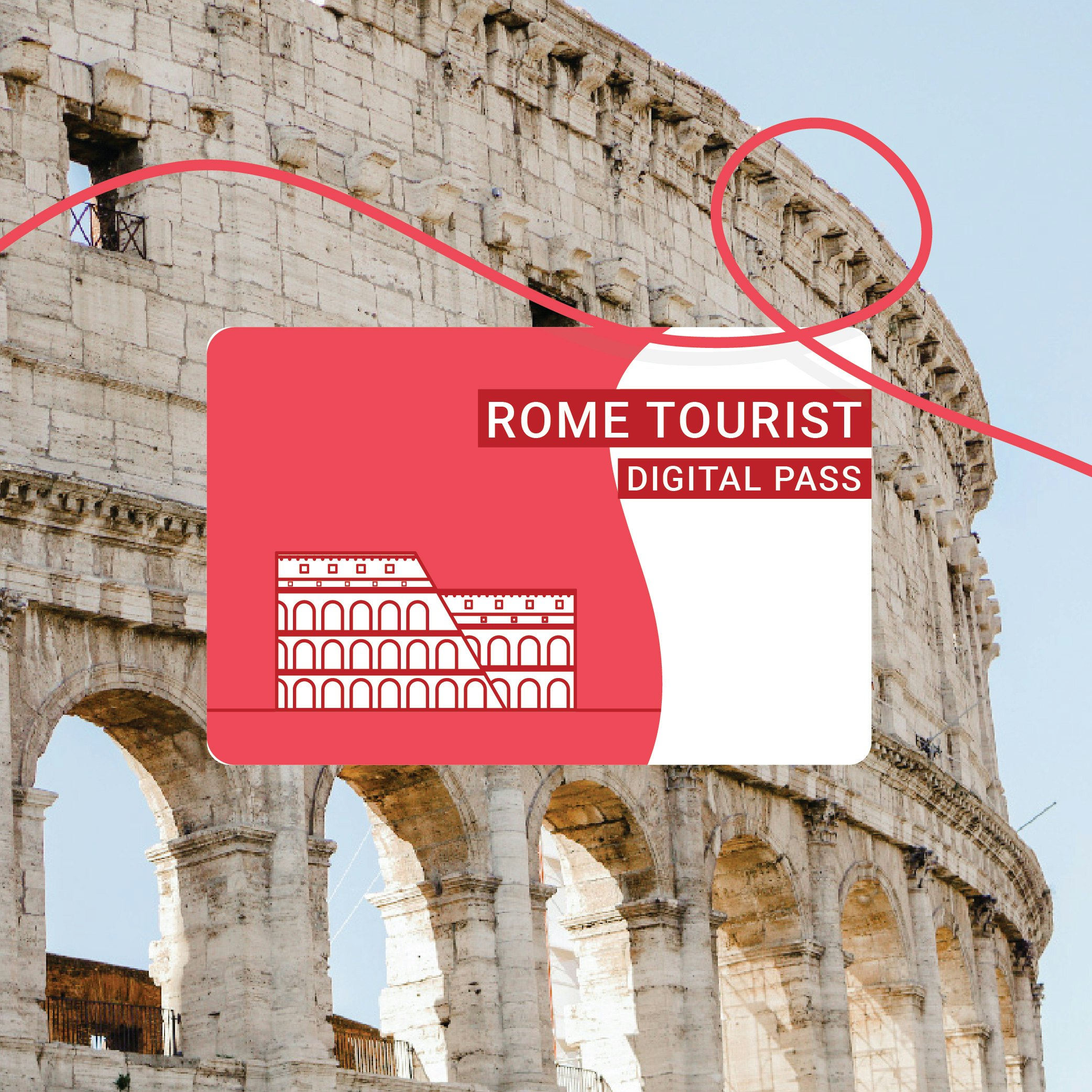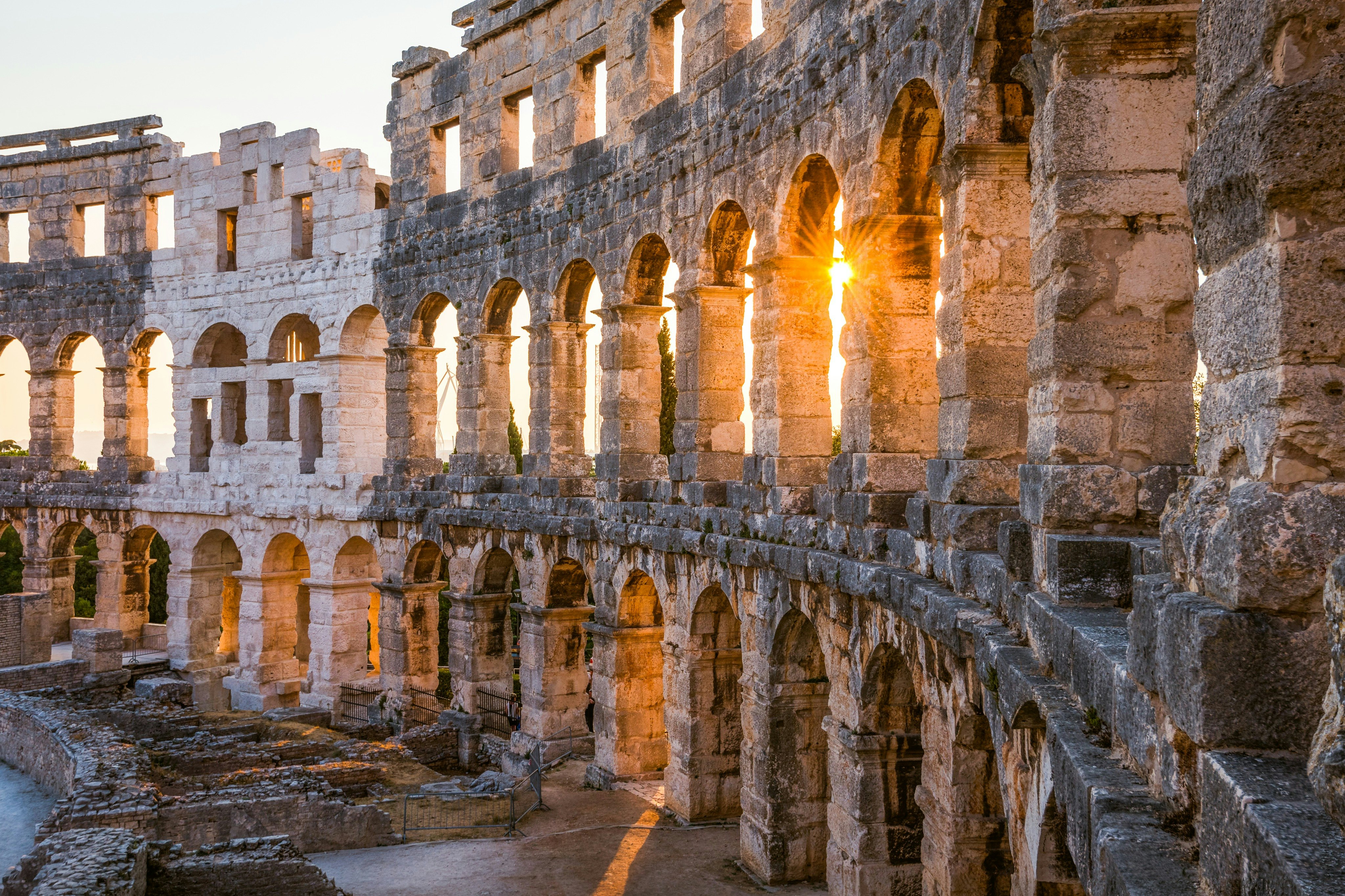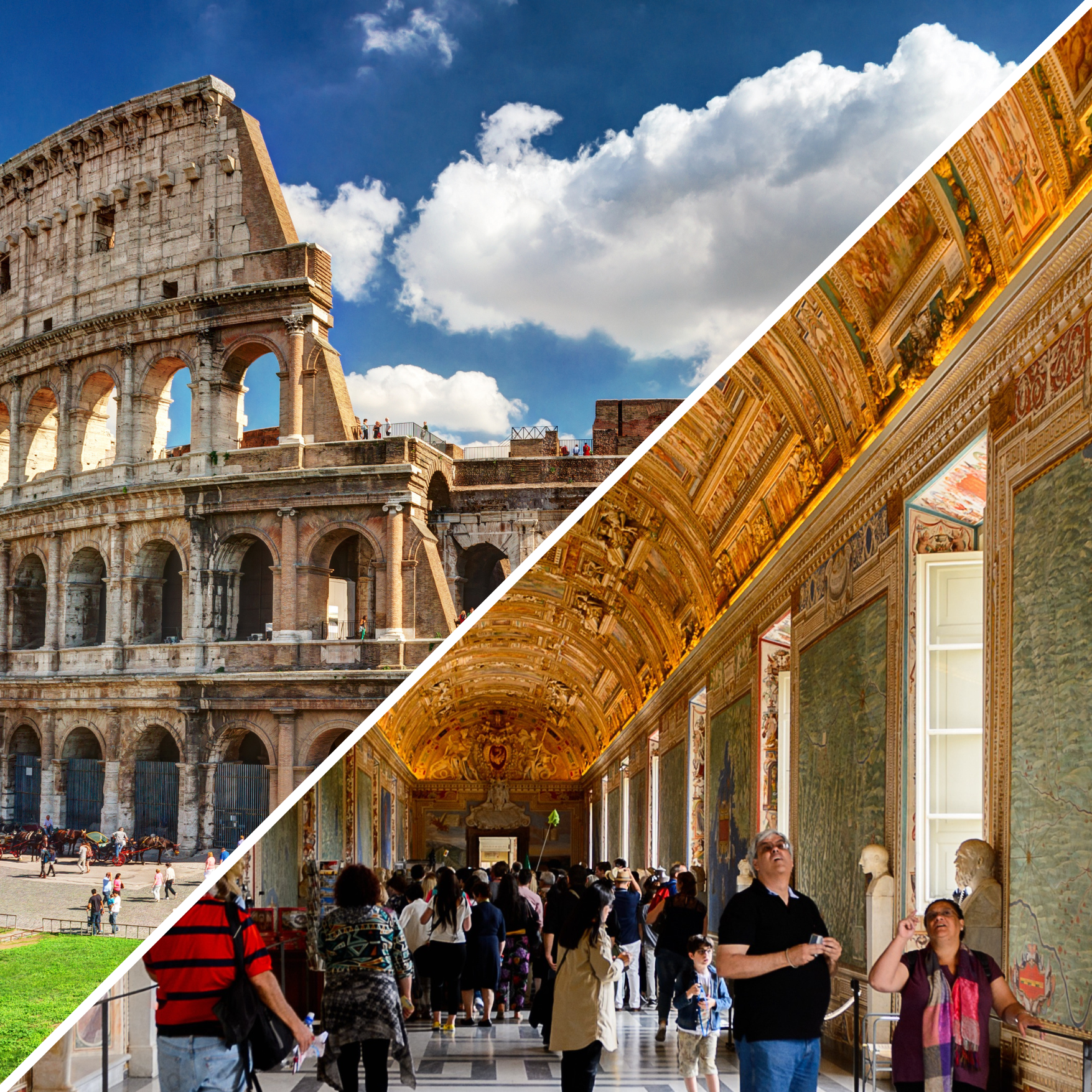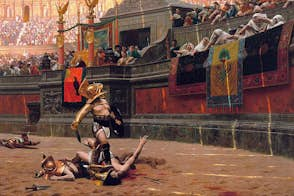
Rome Tourist Card
- Roman Forum, Palatine Hill & Imperial Forum
- St. Peter's Basilica or Vatican Museums & Sistine Chapel
- Pantheon or Castel Sant'Angelo
+ 1 other top thing to do
Visit this impressive ancient structure where gladiators once battled and chariots raced!
42 options • from $25.00

+ 1 other top thing to do









































Combine Colosseum with other Rome favorites. Some things are better together.
As one of the New Seven Wonders of the World, it's no surprise that Colosseum tickets are immensely popular. If you want to see one of Rome's most iconic landmarks, you should definitely book in advance.
You might have some luck buying tickets on the day, but the number of tickets to the Colosseum per day are limited so it's better not to risk missing out – especially if you're visiting Rome during the high season. If you do forget to buy ahead of your visit, you can expect a lengthy queue outside the Colosseum.
There's a range of tickets available, so it depends on what kind of experience you're after. If you just want basic admission to the Colosseum, opt for a ticket that allows you to skip the ticket line and get right inside the venue. With this in hand, you'll have more time to walk through the ruins of the Roman Forum – the hub of ancient Rome – instead of waiting in line.
If you want a more in-depth experience, get a ticket with access to the famed arena floor – you'll get to share the same view as the gladiators and gaze up at the thousands of now-empty seats.
Other tickets grant special access to the Colosseum Underground, where gladiators and lions once prepared for battle. Note that not all Colosseum entry tickets have this option, so be sure it is included before you buy.
You can also combine your Colosseum tickets with other popular experiences in Rome.
While it's the largest amphitheater ever built in the ancient world, its capacity isn't quite as impressive as what can be accomplished by today's modern means.
The largest college football stadium in the United States, Michigan Stadium, can hold 107,600 people compared to the Colosseum's estimated capacity of 50,000-80,000. However, when you take into consideration that it was built close to 2,000 years ago, the Colosseum's capability of holding so many spectators remains impressive. Plus, what other stadium can boast that it once had a marble façade?
When it's almost your 2,000th birthday, you're lucky to still be standing, let alone to be so popular. There's a number of reasons for the Colosseum's damaged appearance on top of the effects of time, from fire and earthquakes to opportunistic builders capitalizing on spolia (repurposing old stone for new structures).
The Colosseum did manage to stay in its prime for almost two centuries before disaster really struck. In 217 AD, the Colosseum's wooden upper level was badly damaged by fire, and in 443 AD it sustained more damage from a major earthquake.
On top of that, as Christianity rose, the popularity of gladiatorial battles declined and after 435 AD there's no more mention of them in the Colosseum. The arena still remained in use for animal hunts, but its heyday had long since passed. Another earthquake in 1349 AD saw more damage done, with the outer south side collapsing.
People lived there during the Middle Ages
After the Colosseum's use as an arena began to falter, the citizens of Rome got creative with its purpose. From the end of the 9th century until the 14th, residents lived inside the amphitheater! Alongside the humble homes were workshops and even stables.
There was more to see than just gladiators
Elaborate set-dressing was also a major part of the games, with the Colosseum often transformed to appear as a whole new setting. Plants would be brought in and elaborate scenes would be set up for animal hunts (Venatio).
It's got more than one name
The world's biggest amphitheater was also dubbed the Amphitheatrum Flavium after the dynasty who created it. So, then why the Colosseum? Well, outside the arena stood a 100-foot-tall bronze statue of the Emperor Nero. Inspired by the Colossus of Rhodes, it's theorized that this colossal memorial to Nero is where the Colosseum gets its name from.
The largest ancient amphitheatre ever built and still the largest standing amphitheatre in the world today!
The home of Ancient Rome's gladiatorial battles
It was capable of holding 80,000 Roman spectators during its peak
One of the most important sights to see in all of Italy and it's open to the public all year round
Spend more time inside when you purchase tickets in advance
Can be combined with a visit to the Roman Forum and Palatine Hill
There's a variety of ticket options available, including guided tours, night tours, and audio guides
Millions have passed through the gates of the Colosseum over the centuries – lucky for you, tickets are easier to get than ever.
Make sure you book your tickets in advance – lines can stretch for hours, especially during the summer high-season, and tickets are usually sold out by the time you arrive to the venue.
While you are at it, make it a day and explore more of what Rome has to offer with combo tickets that include the Roman Forum, Palatine Hill, and the Mamertine Prison – all within a short walking distance of the Colosseum.
Guided tours – partner up with a passionate historian or archeologist and discover more about the ancient Roman arena!
Combined admission fees for surrounding sights, like the Roman Forum, Palatine Hill and the Mamertine Prison
Access to the arena floor, where legendary gladiators once stood
You can visit the venue at any time during opening hours, with or without a guide
To avoid the crowds, book tickets in the morning, just before closing, or on a weekday
Most areas of the venue are wheelchair accessible, including an elevator
Leave your luggage at the hotel – backpacks and luggage are not permitted inside the Colosseum
Stay hydrated on your tour and bring an empty water bottle – there are refill stations inside the venue



The Colosseum is a massive ancient amphitheater in the center of Rome. Picked apart by scavengers and ravaged by earthquakes and time, the Colosseum still stands as an impressive symbol of life in Ancient Rome. It showcases the power of past emperors and the durability of the Eternal City.
This huge, marble and limestone structure was built to hold more than 50,000 spectators, all there to revel in the various forms of (mostly violent) entertainment, such as hunts, gladiator battles, and executions.
| Sunday | 08:30 - 19:15 |
| Monday | 08:30 - 19:15 |
| Tuesday | 08:30 - 19:15 |
| Wednesday | 08:30 - 19:15 |
| Thursday | 08:30 - 19:15 |
| Friday | 08:30 - 19:15 |
| Saturday | 08:30 - 19:15 |

Before the Colosseum was a famous ruin, gladiators would square off here in brutal fights for Romans' entertainment. But who were these gladiators?





